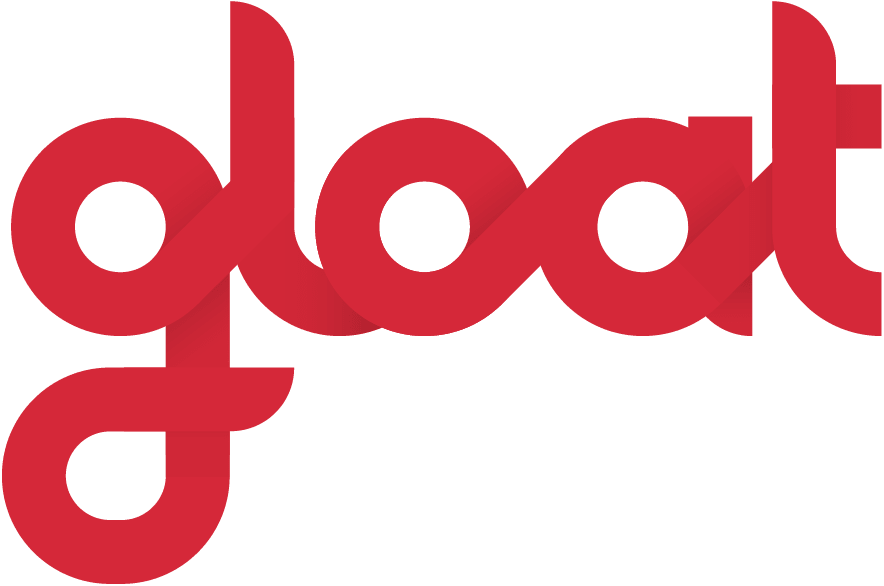Understand the true ROI of your AI investments
Gain clear visibility into AI's potential impact on your organization's work, identify tangible cost savings, and create a clear strategy for AI and people to thrive together.
Talk to an expertFrom Ambiguity to Actionable Strategy
Quantify savings with Signal
Use Gloat Signal to quantify the potential financial savings if all automatable work were automated by AI, revealing multi-million or even multi-billion dollar opportunities.
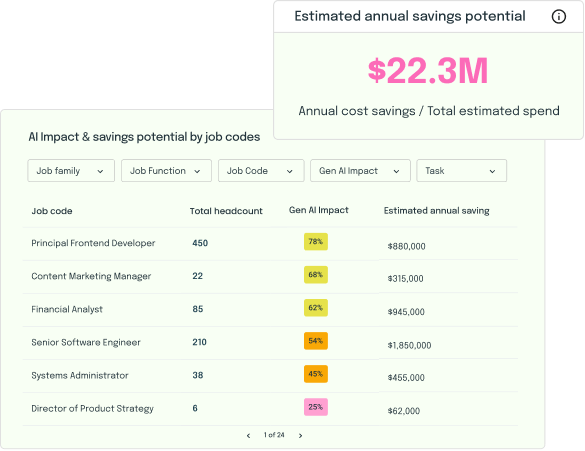
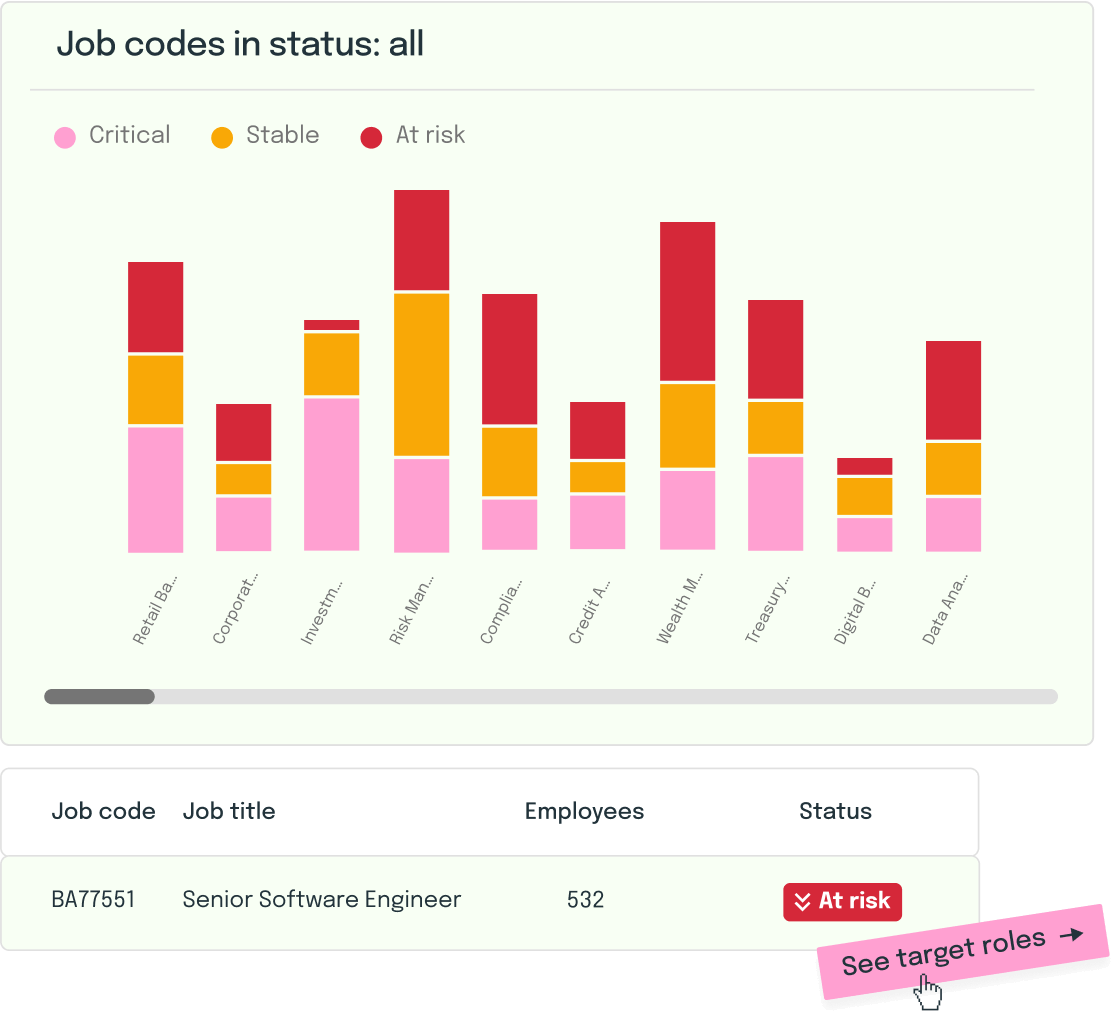
Optimize the enterprise with Planner
Go beyond analysis with Gloat’s Planner tool to model workforce redeployment scenarios, identify skill gaps, and achieve strategic headcount optimization without sacrificing talent.
Pinpoint high-impact automation opportunities
Identify top work tasks with high volume and associated costs that, if automated, would yield significant ROI. This provides actionable insights to guide and prioritize your AI investments.
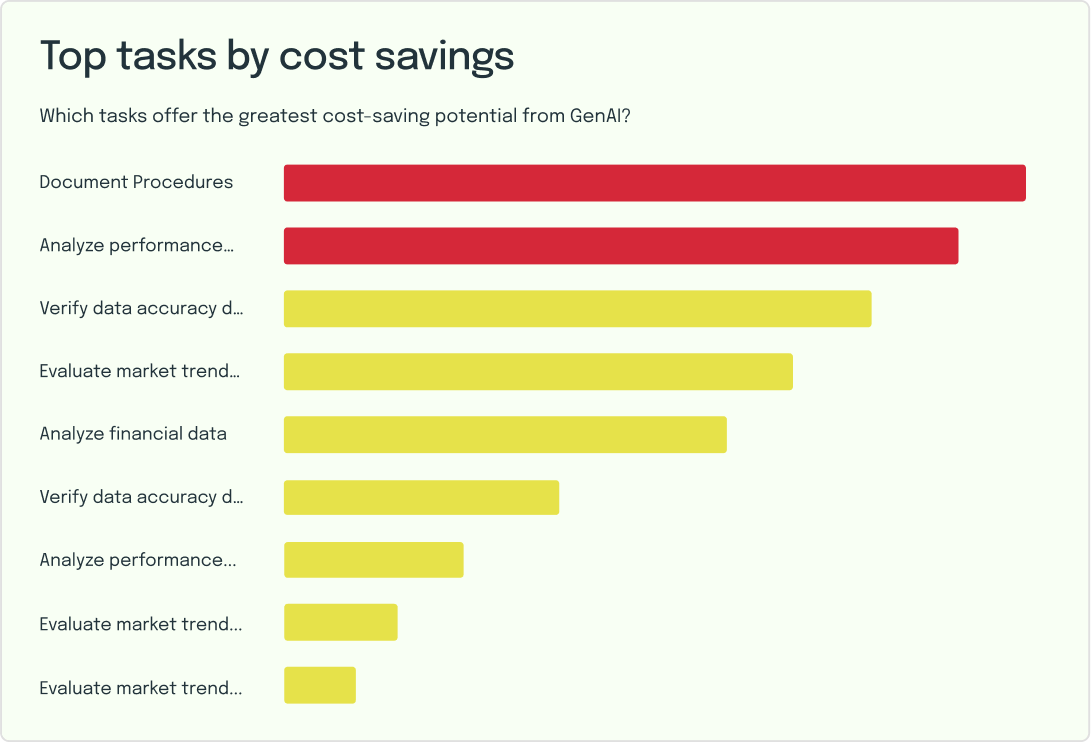
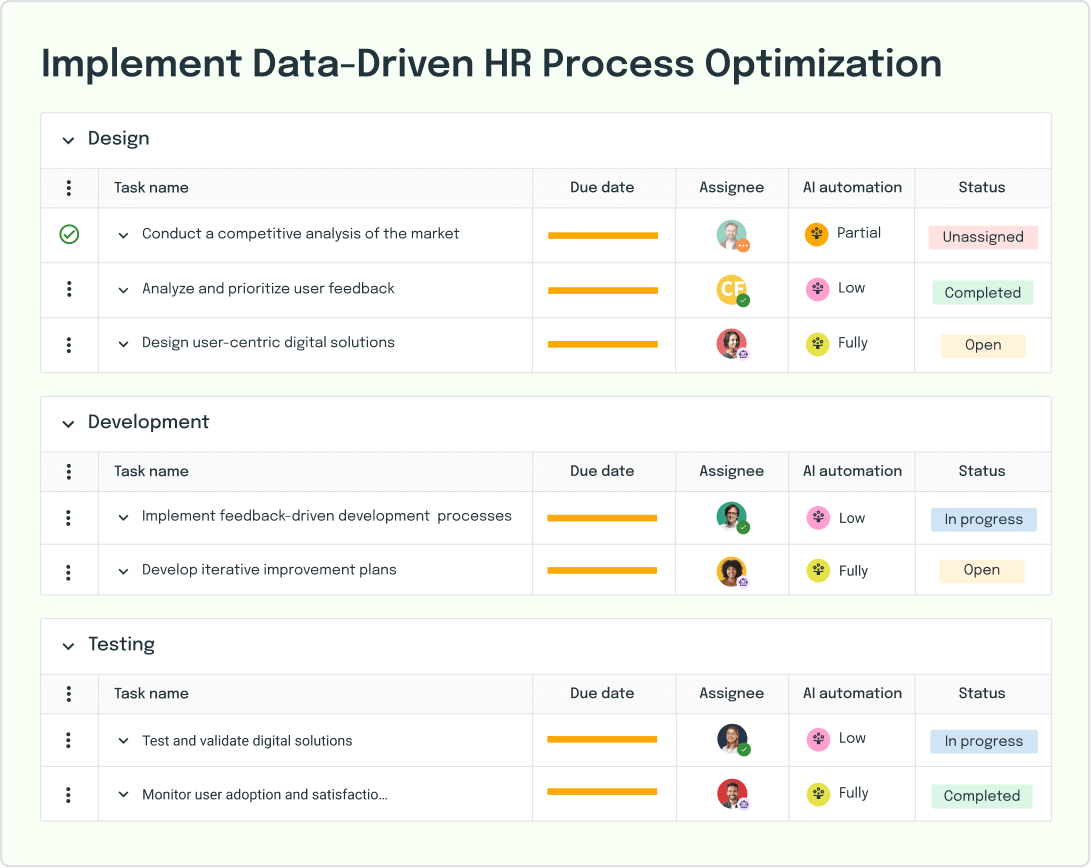
Connect strategy to employee action
Bridge the gap between top-down strategy and daily execution. Use insights from the Signal and Planner to drive targeted AI enablement programs in Studio, guide career growth in the Talent Marketplace, and boost AI Copilot adoption through day-to-day work orchestration in Mosaic.
A strategic view for accountable leaders
For AI Strategy Leads
Gloat Provides data-driven insights from the AI acceleration Dashboard into potential savings and high-impact automation opportunities.
For CFOs / Finance Leaders
Gloat Offers estimated annual savings potential and headcount optimization scenarios, enabling a stronger business case for Al adoption.
For Head of Workforce Planning
Gloat Identifies top tasks for automation and provides the Planner tool to guide strategic redeployment and reskilling initiatives.
Translate Total Visibility into Tangible Value
Quantify tangible ROI for AI investments, justifying large-scale initiatives.
Achieve strategic headcount optimization by identifying high-impact work tasks for automation and redeploying talent effectively.
Gain clear visibility into the AI Impact on the organization and the evolving relationship between AI and people.
Inform your strategic roadmap with the data needed to drive company-wide AI enablement and Copilot maximize efficiency.
What our clients say

“It’s 1.6 million data points on skills that we have had within the past year in terms of changes in skills. If you just go back a few years, we weren’t anywhere close to understanding that in the workforce.”

